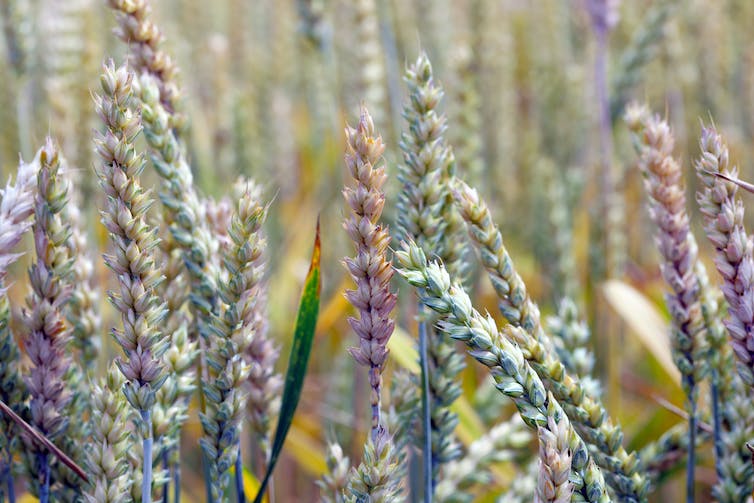In the HBO series “The Last of Us,” named after the popular video game of the same name, the flour supplies of the world are contaminated with a fungus called Cordyceps. When people eat pancakes or other foods made with that flour, the fungi grow inside their bodies and turn them into zombies.
As a food scientist, I study the effect of processing on the quality and safety of fruits and vegetables, including the flour used to make pancakes. While no one is going to turn into a zombie from eating pancakes in real life, flour is often contaminated with fungi that can produce mycotoxins that make people sick. Proper processing and cooking, however, can generally keep you safe.
‘The Last of Us’ is premised on a pandemic that brings the world to an apocalyptic collapse.
How common is fungi in flour?
People have been eating bread made from wheat for approximately 14,000 years and cultivating wheat for at least 10,000 years. In 1882, “drunken bread disease” was first documented in Russia, where people reported dizziness, headache, trembling hands, confusion and vomiting after eating bread. Long before that, Chinese peasants were reporting that eating pinkish wheat – a key sign of infection with a mold called Fusarium – caused them to feel ill. Clearly, fungi have been making people sick for a long time.
Wheat, corn, rice and even fruits and vegetables can be infected with fungi as they grow in the field. In “The Last of Us,” an epidemiologist theorizes that climate change is causing the fungus to mutate so it can infect humans. The unfortunate reality is that fungi have become more of a problem in recent years as warmer temperatures encourage their growth.
A 2017 study found that over 90% of wheat and corn flour samples in Washington, D.C., contained live fungi, with Aspergillus and Fusarium the predominant types of mold in wheat flour. Fusarium grows on wheat in the field and can cause a common agricultural plant disease called fusarium head blight, or scab.
Farmers use multiple techniques to reduce this devastating plant disease, including implementing crop rotation, using resistant varieties and fungicides and minimizing irrigation during flowering. After harvesting, they sort the grains to remove contaminated wheat before grinding them into flour. While sorting removes most of the contaminated wheat, small amounts of fungi can still make it into the flour.

Wheat infected with fusarium head blight have a characteristic pink hue.
Tomasz Klejdysz/iStock via Getty Images Plus
Killing microorganisms in flour
The good news is that most fungi and other microorganisms die at 160-170 degrees Fahrenheit (71-77 degrees Celsius). Pancakes are typically cooked to an internal temperature of 190-200 F (88-93 C). Other cakes and breads are cooked to internal temperatures anywhere from 180 to 210 degrees Fahrenheit…



